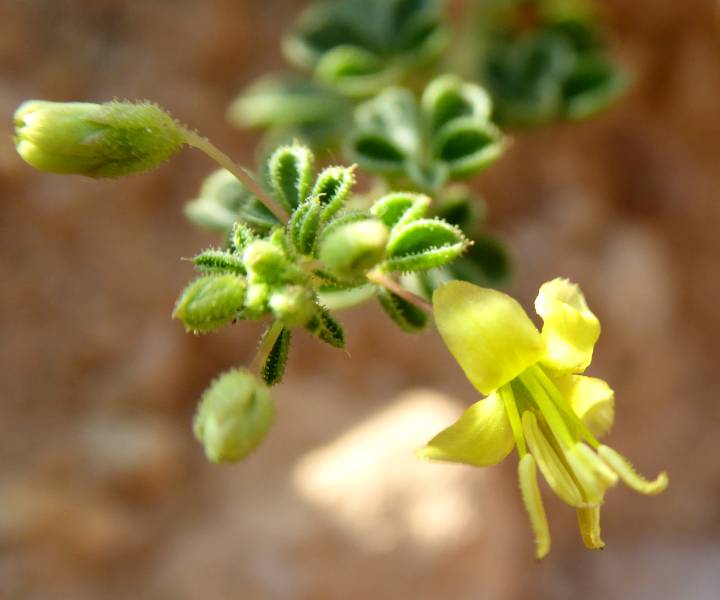|
Cleomaceae |
|
|
See references Plants usually herbaceous, sometimes the lower parts woody, occasionally subshrubs. Leaves alternate; stipules minute; blades simple or palmately compound. Inflorescences racemes. Flowers pedicellate, radially to bilaterally symmetric, usually bisexual, sometimes with an androgynophore. sometimes with a gynophore or androphore, and sometimes with neither; sepals 4, sometimes soon falling; petals 4, clawed, equal or unequal; stamens 6-many, sometimes on an androgrynophore; ovaries usually 1-celled, with many ovules, sometimes on a gynophore. Fruits usually dehiscent capsules, sometimes nut, when capsules, the valves dehiscent leaving the persistent parietal placentae as a frame, the replum; seeds rounded-reniform, often ornamented. The family Cleomaceae about 270 species but estimates of the number of genera involved vary widely, some taxonomists including many small genera in Cleome while other increase monophylly by recognizing more genera, not necessarily those including in Cleome. The above description is based on accounts of what are treated as three genera in Capparaceae in the Flora of Somalia, with some modifications based on information in Stephens (2021 onwards). Stephens, who recognizes both the Capparaceae and Cleomaceae, comments: "Cleomaceae are herbaceous or shrubby plants with usually palmately compound leaves, the inflorescence is racemose, the flowers ar often monosymmetric, the petals and stamens being curved upwards, and they have four clawed petals, six stamens, and two carpels; the gynoecium has a gynophore, the stamens have long filaments, and the dehiscent fruit has a thin, persistent, loop-like woody placenta that remains on the plant after the fruit valves have fallen off." Only one genus, Cleome, is present in Somaliland and Somalia. References Thulin, M. (1993) Capparaceae in M. Thulin (ed.) Flora of Somalia 1: 37-60. Trustees of the Royal Botanic Gardens, Kew, Richmond, Surrey, England. Stevens, P. F. (2001 onwards). Angiosperm Phylogeny Website. Version 14, July 2017. Accessed 24 November 2021.
|
|

